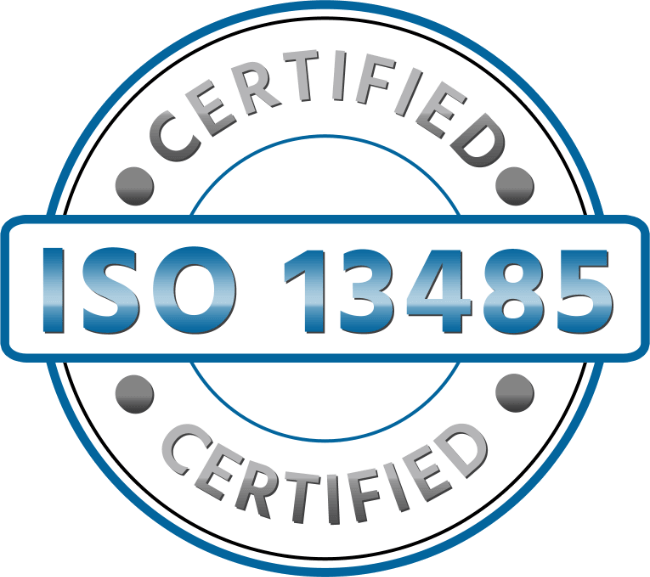Cardiac Arrest Survivor: “I Shouldn’t Be Here”
On August 10, 2019, Greg Eubanks had a layover in Minneapolis on his way home to San Diego. While walking through the Minneapolis airport, Greg suffered from the “widowmaker,” a heart attack with blockage in the left anterior descending artery.
According to the American Heart Association, only 12% of those who experience the widowmaker outside of a hospital setting survive.
Emergency personnel worked diligently for 25 minutes to resuscitate Greg. Physicians weren’t sure if, or to what extent, Greg had suffered brain damage. Family members sat by his side and waited for him to wake up from a medically induced coma.
“I shouldn’t be here now,” said Greg. Greg attributes his survival and lack of brain damage to the fast-acting TSA agents, highly trained emergency personnel, being at one of the top-ranked hospitals in the nation for heart attacks and the fact that the airport had a new device, the EleGARD™ patient positioning system, that positions patients for the delivery of the ElevatedCPR™ method (head-up CPR).1
Brain Injury and CPR
Brain injury is a common concern for heart attack patients. While blood flow restoration is essential to resuscitation, the sudden rush of blood to the brain can cause a reperfusion injury.2
Compressions on a patient in a flat position force blood from both sides of the heart, simultaneously increasing arterial and venous pressures. This increase in intracranial pressure increases the risk of concussion. Elevating the head helps to offset the pressure.3
The ElevatedCPR™ Method
The ElevatedCPR™ method is a technologically advanced technique for performing device assisted head up CPR that incorporates raising the head, heart and thorax in a multi-level elevation, in a timed sequence, in conjunction with best practice resuscitation protocols.
The EleGARD™ Patient Positioning System is the only device designed to precisely and consistently position patients to support the practice of the ElevatedCPR™ method.1
Preclinical studies show the addition of the EleGARD™ System to the existing use of an Impedance Threshold Device (ITD) and Active Compression Decompression CPR (ACD-CPR) or mechanical CPR has the potential to
- Reduce intracranial pressure4,5,7,8
- Improve cerebral perfusion pressure4,5,7,8
- Improve coronary perfusion pressure4,6,9
While maintaining aortic pressure compared to conventional CPR or Manual CPR Adjuncts+ITD CPR.4,5,6,7
To learn more about the EleGARD™ Patient Positioning System by AdvancedCPR Solutions® or for a demonstration, email us or call 888-891-1200.
Hear More of Greg’s Inspiring Story
Schedule a Product Demonstration
MED Alliance Group is a medical device distributor with more than 350 years of combined medical device sales and distribution experience. Dedicated to meeting the needs of its clinical customers and manufacturing partners, MED Alliance offers cost-effective, customized sales, logistics, and distribution solutions for products found in anesthesia/respiratory, blood/transfusion therapy, EMS/emergency room, interventional radiology/cath lab, iv/vascular and NICU/PICU.
Please follow us on LinkedIn, Facebook and Twitter for MED Alliance product updates.
References:
[1] Scheppke, Prehospital Emergency Care 2020
[2] https://www.verywellhealth.com/brain-activity-after-cardiac-arrest-1298429#:~:text=When%20cardiac%20arrest%20occurs%2C%20it,irreversible%20brain%20damage%20is%20likely.
[3] https://www.emsworld.com/article/1223674/raises-head-looks-around-state-elevated-cpr
[4] Ryu H, Moore J, Yannopoulos D, Lick M, McKnite S, Shin SD, et al. The Effect of Head Up Cardiopulmonary Resuscitation on Cerebral and Systemic Hemodynamics. Resuscitation. 2016;102:29-34.
[5] Debaty G, Shin S, Metzger A, Kim T, Ryu HH, Rees J, et al. Tilting for perfusion: head-up position during cardiopulmonary resuscitation improves brain flow in a porcine model of cardiac arrest. Resuscitation. 2015;87(2015):38-43.
[6] Kim T, Shin SD, Song KJ, Park YJ, Ryu HH, Debaty G, et al. The effect of resuscitation position on cerebral and coronary perfusion pressure during mechanical cardiopulmonary resuscitation in porcine cardiac arrest model. Resuscitation. 2017; 113:101-107. doi: https://doi.org/10.1016/j.resuscitation.2017.02.008
[7] Moore J, Holley J, Segal N, Lick M. et al. Consistent head up cardiopulmonary resuscitation haemodynamics are observed across porcine and human cadaver translational models. Resuscitation. 2018; 132: 133-139. https://doi.org/10.1016/j.resuscitation.2018.04.009
[8] Moore J Salveda B, Lick M, Rojas-Salvador C, Debaty G, Segal N, Lurie K. Controlled progressive elevation maximizes cerebral perfusion pressure during head up CPR in swine model of cardiac arrest [Abstract]. Circulation. 2018;138(Supplement2):A17.
[9] Rojas-Salvador C, MooreJ, Salverda B, Debaty G, Lick M, Lurie K. Controlled Head and Upper Thorax Elevation Improves Cerebral Perfusion Pressure during Active Compression-Decompression Cardiopulmonary Resuscitation with an Impedance Threshold Device in a Porcine Model of Cardiac Arrest. Poster presented at: National Association of EMS Physicians; Austin, TX 2019




